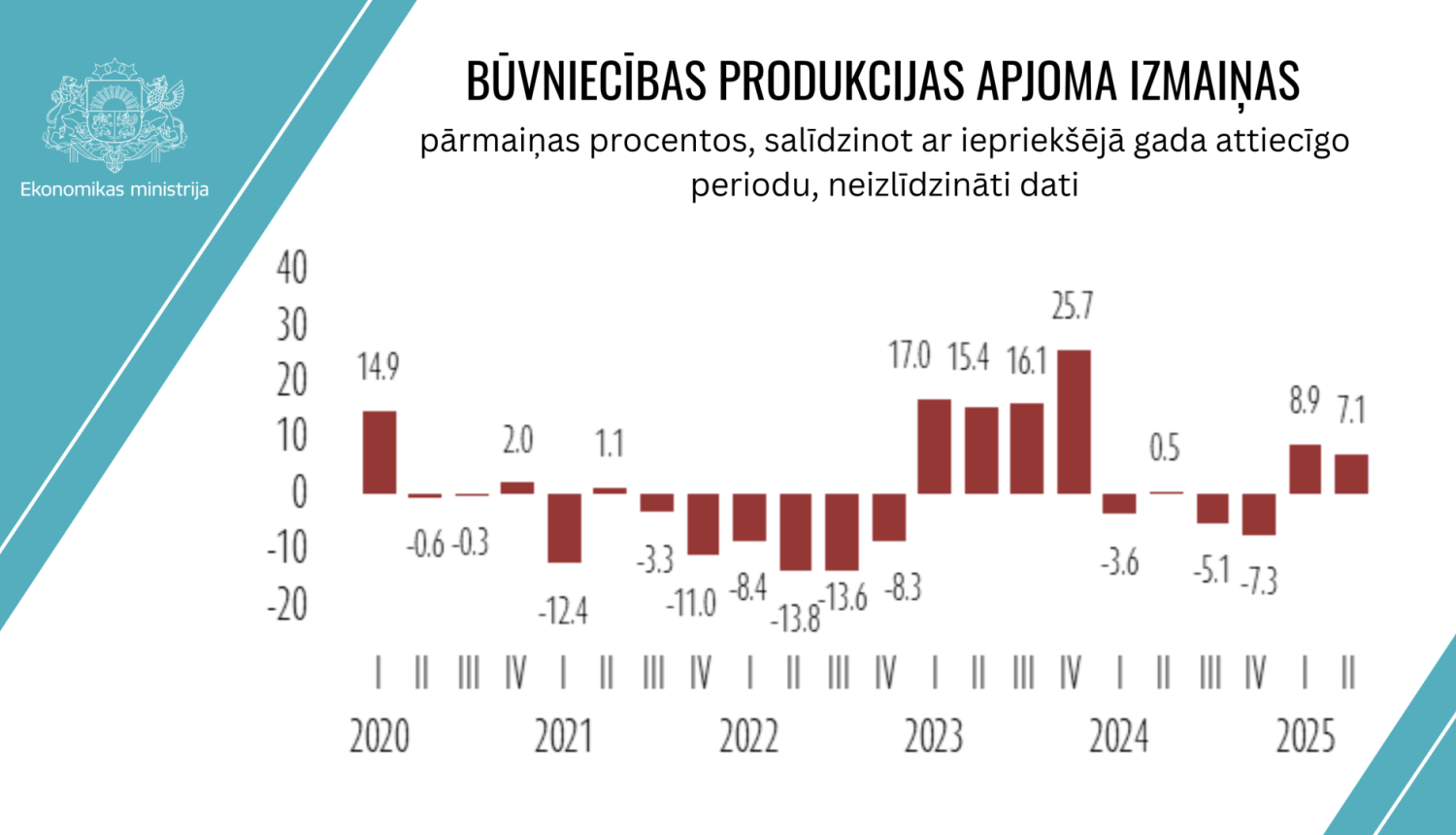Translated using ChatGPT service.
Construction growth in 2025 continues to be driven by more active infrastructure development.
Industry activity is increasing in 2025, and the sector continues to grow. In the first half of the year, construction output at constant prices was 7.8% higher than in the corresponding period of 2024 (unadjusted data). Meanwhile, in the second quarter, the growth rate was 7.1% compared to the second quarter of 2024. As in the first quarter, this was determined by more active infrastructure construction, such as the installation of solar panels and work on high-voltage facilities.
The increase in activity is not uniform across all main construction groups. Civil engineering has seen rapid growth, while specialized construction work indicators remain at the previous year's level. In 2025, civil engineering is the main driver of sectoral development.
In building construction, a decline was observed in the second quarter of 2025. The output of this core construction group decreased by 2.8% compared to the second quarter of the previous year. This was influenced by reduced activity in non-residential building construction during the period.
The growth rate of civil engineering in this period was 27.7% compared to the second quarter of 2024. Overall, strong growth was observed across all civil engineering segments.
The output of specialized construction works in the second quarter of 2025 remained at the previous year's level, with a 0.1% decrease compared to the same period in 2024. Growth was observed in the following segments of this group: demolition of buildings and site preparation, as well as finishing works.
The increase in activity is also reflected in building permit dynamics. Although the number of permits in the second quarter of 2025 remained at the level of the second quarter of 2024, the planned floor space increased. A total of 1,192 permits were issued, or 0.1% fewer than a year earlier. However, the planned floor space increased by 33.2%, largely driven by industrial production buildings and warehouses, as well as facilities for large-scale entertainment events, education, or healthcare institutions.
The sentiment among construction entrepreneurs is improving, as evidenced by the positive dynamics of the construction confidence indicator. Industry indicators allow for a positive outlook on the sector's development in the coming quarters, with continued inflows of investment into the sector.



